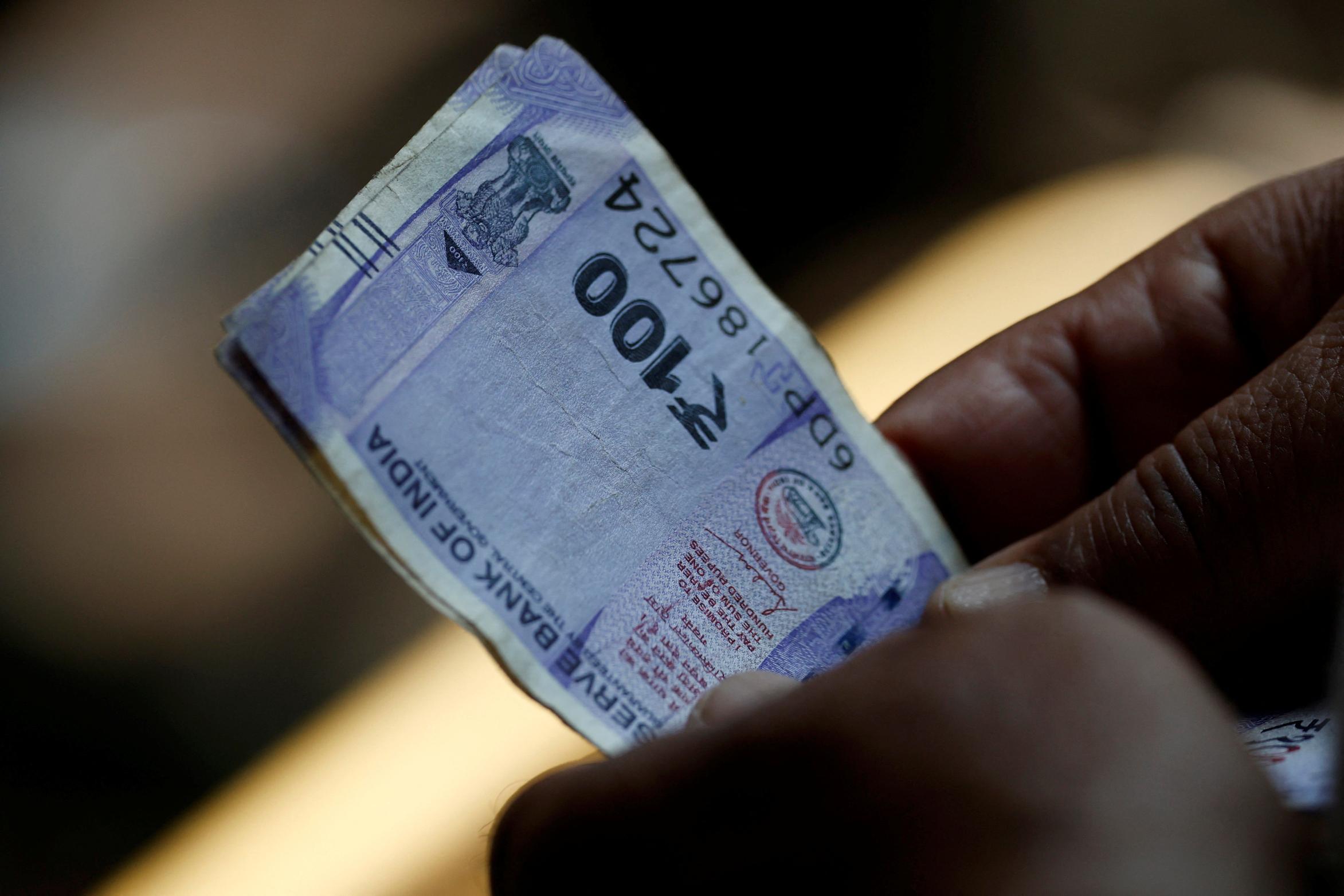
2024-09-04 06:10
Q2 GDP rises 0.2% q/q, under forecasts of 0.3% Consumers drag on growth, govt spending keeps economy afloat Inflation measures still high, productivity falls again Markets still wagering on Dec rate cut, RBA in no hurry SYDNEY, Sept 4 (Reuters) - Australia's economy stayed stuck in the slow lane in the June quarter as stiff borrowing costs and stubborn inflation squeezed consumers, leaving government spending as the main driver of growth. Data from the Australian Bureau of Statistics on Wednesday also revealed that domestic price pressures were still running high, underscoring the central bank's reluctance to cut rates anytime soon even though markets are wagering on a December policy easing. Real gross domestic product (GDP) rose 0.2% in the second quarter, unchanged for three straight quarters, and was just under market forecasts of 0.3%. Annual growth slowed to 1.0% from 1.3% the previous quarter, lows last seen during the 1990s recession, barring distortions from the pandemic. For the quarter, household spending, which accounts for half of GDP, actually fell 0.2% to drag on growth, as people cut back on trips abroad. The savings rate stayed subdued at 0.6%. "The economy is lacking a clear engine of growth. Tight policy settings have successfully reined in demand, but inflationary pressures are yet to be completely tamed," said Sean Langcake, head of macroeconomic forecasting for Oxford Economics Australia. "Income tax cuts and consumer subsidies will aid momentum in the second half of the year. But any improvement in activity will be unspectacular." The downturn has been largely engineered by the Reserve Bank of Australia which hiked interest rates to a 12-year high of 4.35% in an effort to curb demand and price pressures, but underlying inflation remained high at 3.9% last quarter. Productivity - the measure of output per hour worked - dropped 0.8% in the quarter. The result might be worrisome for the RBA as its forecasts on inflation to return to the target band of 2-3% in 2026 were centred on a pickup in productivity. Treasurer Jim Chalmers described the GDP figures as "soft and subdued", but said they were in line with expectations as government spending, primarily on health, boosted the economy. WAITING FOR GROWTH The RBA expected economic growth to pick up to 1.7% in the fourth quarter, which assumed two strong quarters in the second half of the year, although evidence so far is scant that the expected rebound in consumer spending is materialising as households saved most tax cuts. Retail sales were already flat for July in an indication that large-scale tax cuts were yet to boost spending, and card data for August from Westpac showed just a gradual pickup, suggesting fiscal support is only having a muted impact on demand. Financial markets are still pricing in a 90% probability of a rate cut in December, even though policymakers have all but ruled out an easing this year. Indeed, measures of prices in the GDP report were also on the high side, with inflation in domestic demand running at 4.2% for the year. Terms of trade fell 3% due to falling commodity prices. All this inflation has been a boon for nominal GDP, which expanded 4.4% in the year to June. Stripping out the effects of inflation, however, per capita GDP fell 0.4% in the quarter, the sixth straight quarter of declines. "Given the current growth trajectory and against a backdrop of stubborn inflation and subdued consumer spending, it’s not entirely clear where the rebound in growth will come from, barring pre-emptive RBA rate cuts," said Tony Sycamore, analyst at IG. (This story has been corrected to fix the annual growth rate for Q1 to 1.3%, not 1.2%, in paragraph 4) Sign up here. https://www.reuters.com/markets/australia-economy-grows-meagre-02-q2-household-spending-drags-2024-09-04/

2024-09-04 06:02
LITTLETON, Colorado, Sept 4 (Reuters) - The United States has remained the largest exporter of liquefied natural gas (LNG) so far in 2024, but a steep drop in selling prices and a sharp swing in export volumes to key markets is likely testing exporter appetite to stay on top. The United States shipped a record 56.9 million metric tons of LNG during the first eight months of 2024, according to Kpler. That surpassed the 54.3 million tons from Australia and 53.7 million tons from Qatar during that period, and marks only the second straight year that U.S. exporters have topped global export rankings. However, a more than 25% drop in average LNG export prices during the first half of 2024 from the first half of 2023 dealt a heavy blow to export revenues, which dropped by $4 billion from the opening half of 2023 to $13.2 billion, data from the U.S. Energy Information Administration (EIA) shows. That was the lowest half-year revenue total since the first half of 2021, and marks a more than $12 billion fall from the second half of 2022 when U.S. export earnings from LNG peaked. The challenge of sharply falling revenues was compounded by a sharp reconfiguration in export volumes to key markets, which saw shipments to relatively close markets in Europe drop by more than 20% while sales to more distant Asia rose by over 40%. Continued muted LNG demand in Europe and further growth in Asia may test the resolve of U.S. exporters to remain the world's largest LNG sellers, as several far-flung Asian markets can be more cheaply supplied by other sellers. EUROPE'S RISE AND FALL Europe's sudden jump in demand for LNG since Russia's invasion of Ukraine in 2022 snarled natural gas pipeline flows to the region has been the main catalyst behind the ascendancy of the U.S. LNG export industry. From 2018 through 2021, U.S. LNG exports to Europe averaged around 15 million tons a year, according to Kpler, but jumped to around 55 million tons annually in 2022 and 2023 as Europe's power firms scrambled to replace lost Russian gas by whatever means necessary. U.S. exporters were happy to help fill the gas gap, lifting total export volumes by 95% from 2019's total by the end of 2022. Europe's share of the total U.S. LNG traffic also roughly doubled, from around 37% from 2019 through 2021 to nearly 70% in 2022. A roughly 44% drop in shipments to Asia during 2022 from the year before also allowed U.S. LNG sellers to prioritize Europe over all other customers, and capitalize on the unprecedented supply shock that roiled global gas markets during that period. COOLING DOWN U.S. LNG shipments to Europe scaled even greater heights in 2023, but the tone has changed in 2024, with shipments from January through August dropping by 22% from the same months in 2023. A key driver behind that slowdown has been a sharp climb in European power generation from renewable energy sources, which remain a priority for Europe's power firms going forward. Solar and wind power's share of electricity generation in Europe jumped from around 16.4% in 2022 to 20.5% so far in 2024, according to Ember. To make way for the higher renewables generation, fossil fuel generation's share dropped from around 44.6% in 2022 to 36.6% so far this year. Coal-fired power has been the main fossil fuel source that has been cut in Europe, but natural gas generation's share has also declined, from around 26% in 2022 to 22% so far this year. PIVOT Lower gas reliance across Europe is bad news for U.S. LNG exporters. To make up for lower sales into Europe, U.S. exporters may attempt to grow share in Asia, which is a clear bright spot for global gas sellers. However, other major exporters including Qatar and Australia boast far lower shipping distances to key Asian markets, on top of competitive gas liquefaction charges. Shipments to India, for example, can take five times longer from Cove Point in the U.S. than from Ras Laffan in Qatar, LSEG data shows. And Australia can ship LNG to southern China in under nine days, compared to 35 days from the U.S. East Coast. The U.S. LNG tanker fleet is able to handle such long distances, but the stretched-out turnaround times would eat into exporter earnings, and may result in the LNG export sector dialing back shipments to only the largest buyers. That sharper focus would help preserve profits for the sector, but may lead to the U.S. losing the top LNG exporter spot to its main rivals that have expansion plans already in place to serve fast-growing local markets. Sign up here. https://www.reuters.com/markets/commodities/us-lng-export-dominance-tested-europes-demand-wilts-maguire-2024-09-04/

2024-09-04 06:01
LONDON, Sept 4 (Reuters) - The market's best guess is the European Central Bank won't step on the accelerator over the coming cycle - which is either way off beam or extremely worrying. Based on current money market projections, the ECB's overall interest rate setting is expected to continue to act as at least a mild drag on the slow-growing bloc over the next two years even as it gradually reduces its main policy rate. Avoiding an undershooting of its 2% inflation target and maintaining positive growth without switching to a stimulative stance seems like a tall order given the deep-seated problems the region has faced for more than a decade. The ECB has already jumped ahead of the Federal Reserve and will likely have cut its key interest rate for the second time this cycle before the Fed even gets going later this month. That makes intuitive sense. The euro zone economy has been far weaker than its U.S. counterpart over the past two years. And Europe is much more vulnerable to China's worrying economic funk and the global manufacturing downturn, given that manufacturing makes up 20% of the German economy and 15% of the wider euro zone's. Disinflation - especially in core goods prices - has been rapid, and the ECB's inflation targets are in sight. But the conundrum is less about why ECB easing is already underway than where it's expected to end up. Right now, money markets see ECB policy rates bottoming out over the next 12 to 18 months at about 2.10%-2.20%. But assuming, as the ECB does, that inflation will durably fall back to its 2.0% goal before 2026, then markets are implying that "real" ECB rates will remain in positive territory throughout the cycle. That mean rates would remain above where most ECB policymakers guess the fabled "R-star" neutral rate currently is. What's more, while the market assumes ECB rates will ultimately remain more than 125 basis points (bps) below Fed equivalents, current pricing also suggests the Fed will ease by 50 bps more than the ECB over the entire cycle through the end of next year. Some of the market caution has been guided by ECB officials, of course, many of whom are adamant they still need to tamp down elevated service sector inflation and rapid wage growth. By restating their determination to keep policy somewhat tight regardless of the growth implications, officials may also be playing a psychological game to keep inflation expectations low. Last week, ECB board member Isabel Schnabel , opens new tab highlighted the importance of policy "perseverance" and the central banks' "perceived commitment" to meeting its targets as necessary for price stability to be restored after a shock. And, intriguingly, she suggested the murkiness surrounding the neutral rate might make determining the terminal rate a bit of a guessing game. "The closer policy rates get to the upper band of estimates of the neutral rate of interest – that is, the less certain we are how restrictive our policy is - the more cautious we should be," Schnabel said in a speech in Tallinn. UNDERSHOOT OR STAGFLATION? All of this might go some way to explaining why the ECB is reluctant to sound the "all clear", but not why the market seems so tentative about betting on a monetary spur re-emerging. Unless key structural aspects of the euro zone economy have radically changed since the pandemic, then the ECB will likely have to act aggressively to re-stimulate the slow-growing region. For a start, the significant slowdown in global manufacturing and Europe's still growing direct trade links with an ailing Chinese economy suggest the euro zone faces the real risk of both negative growth and even deflation in the coming year. For instance, Barclays recently pointed out that annual core goods inflation in the euro zone fell to just 0.4% in July, as headline inflation in the region retreated to 2.2%. Meanwhile, annual Chinese factory goods price deflation remains meaningful. Hedge fund manager Stephen Jen has long warned that Western countries could significantly undershoot inflation expectations and slip into outright deflation as supply quirks responsible for the majority of the recent inflation shock unwind. And he restated that belief last week. "There is likely to be a period of outright deflation, I still believe," he said. If that constellation is to unfold, then how can the market not be pricing in a high probability that the ECB will need to dramatically shift its monetary policy stance moving ahead? Bear in mind that prior to October 2023, "real" ECB policy rates had spent all but one month of the prior decade in negative territory. Has that much changed since the pandemic? True, geopolitical upheaval has shifted the playing field and access to cheap Russian gas has disappeared. But much weightier drags on the region's economic potential are much the same as they were in late 2019, not least the ageing demographic profile of the euro bloc, which stands in stark contrast to the brighter picture stateside. Of course, the reason the ECB may not be expected to move into a truly stimulative policy stance over the cycle is that it may not be able to. Deutsche Bank's credit team recently highlighted surveys showing that bloc-wide employment is deteriorating even as underlying wages and price growth still remain too high for many central bank officials. "Sticky inflation could introduce more noise into the ECB's reaction function, biasing the ECB too hawkishly relative to European growth trends," Deutsche's Steve Caprio and team wrote last month. But when trying to find the signal through all this noise, it seems that undershooting inflation expectations should be the bigger concern for the ECB and markets. The opinions expressed here are those of the author, a columnist for Reuters Sign up here. https://www.reuters.com/markets/europe/ecb-terminal-rate-seems-too-high-mike-dolan-2024-09-04/

2024-09-04 05:18
MUMBAI, Sept 4 (Reuters) - The Indian rupee was little changed on Wednesday, as a slump in oil prices and the dovish Federal Reserve outlook countered the poor risk mood. The rupee was at 83.9575 to the U.S. dollar at 10:40 a.m. IST compared with 83.9625 in the previous session. Brent crude dipped in Asia, adding to Tuesday's near 5% drop, on concerns over the demand outlook. Indian equities dropped 0.7%, joining the selloff fuelled by worries over U.S. slowdown. "We know it takes a lot to move the rupee. The risk off is obviously not sufficient," a currency trader at a bank said. The rupee has been in a narrow 20-paisa range over the last month, pushing the 30-day realized volatility to near 1%. "As long as U.S. jobs and inflation remain broadly in line, rupee is unlikely to break out of the range and sustain any kind of momentum," Srinivas Puni, managing director at QuantArt Market Solutions, said. Amid this deadlock, we recommend a disciplined hedging program, with vanilla and some safe exotic options like knock-out forwards to manage the risk, he said. RISK APPETITE TURNS Equities in the U.S. had their worst day in a month following data that indicated manufacturing activity remained weak. That fuelled worries over the growth outlook, prompting investors to buy into contracts that bet that the Federal Reserve will opt for a larger rate cut at this month's meeting. Investors are pricing in a 42% probability of a 50-basis-point rate cut at the Sept. 17-18 meeting, up from 30%, per CME FedWatch Tool. Sign up here. https://www.reuters.com/markets/currencies/rupee-takes-comfort-oil-prices-fed-outlook-amid-equity-selloff-2024-09-04/

2024-09-04 05:06
Ethanol demand lifts Indian corn prices to record high Indian corn exports dip, imports seen rising to record 1 mln T Poultry industry seeks duty-free imports, GM corn Importers tap Myanmar, Ukraine for non-GM corn MUMBAI, Sept 4 (Reuters) - A push by India to make more corn-based ethanol has turned Asia's top corn exporter into a net importer for the first time in decades, squeezing local poultry producers and scrambling global supply chains. The jump in import demand comes after India in January hiked the procurement price of ethanol made from corn to drive a shift away from sugarcane-based ethanol for blending in gasoline. With the government promoting ethanol in gasoline to reduce carbon emissions and trying to ensure ample supply of cheap sugar in the world's biggest market for the sweetener, India appears set to become a permanent net importer of corn. The prospect of India ramping up corn imports is likely to support global prices which are trading near four-year lows. Crushed by soaring feed costs as local corn prices rise far above global benchmarks, India's poultry producers want the government to remove duties on imports and lift its ban on genetically modified (GM) corn. The prohibition severely limits their buying options. India usually exports 2 million to 4 million metric tons of corn, but in 2024, exports are expected to drop to 450,000 tons while the country is set to import a record 1 million tons, mainly from Myanmar and Ukraine, which grow non-GM corn, traders estimate. Traditionally, the poultry and starch industries absorbed most of India's corn production of around 36 million tons. Last year, however, ethanol distilleries started using corn, and their demand grew this year after the government abruptly curbed the use of sugarcane for fuel following a drought. That led to a shortfall of 5 million tons, an official with the All India Poultry Breeders Association said. "Now, the poultry and starch industries are battling with distilleries to get their share of supplies, and this fight is keeping prices high," said Nitin Gupta, senior vice president of Olam Agri India. Olam estimates ethanol distilleries will need 6 million to 7 million tons of corn annually, demand that Gupta said can only be met with imports. Traditional export markets such as Vietnam, Bangladesh, Nepal, and Malaysia, which bought corn from India because of its prompt availability, are now compelled to source supplies from South America and the United States. "Vietnam has cut down its imports of corn from India recently because India's prices are too high," said a Ho Chi Minh City-based trader. ETHANOL FOR CLIMATE FIGHT Looking to curb carbon emissions, India aims to increase the share of ethanol in gasoline to 20% by 2025-26, from 13% now. To achieve its 20% blending target, India will need more than 10 billion litres of ethanol, government estimates show, which is double the volume the country produced in the marketing year ended October 2023. This year, around 3.5 million tons of corn has been used to make 1.35 billion litres of ethanol, about four times more than a year earlier, government data shows. "Sugarcane can start contributing more from the next season, but it cannot contribute more than 5 billion litres. The government's priority is to fulfil domestic sugar consumption," said a senior government official. That would mean an increase in corn-based ethanol production to 3 billion litres, requiring nearly 8 million tons of corn, said the official, declining to be named as he was not authorised to speak with media. POULTRY GROWERS CRY FOUL Rising corn prices are pushing poultry growers into the red, with feed accounting for three-fourths of production costs. Uddhav Ahire, chairman of Anand Agro Group in the western city of Nashik, said the farm gate price of a broiler is about 75 rupees, but production costs have risen to 90 rupees. "The poultry industry cannot sustain such losses for a prolonged period," he said. The All India Poultry Breeders Association and the Compound Livestock Feed Manufacturers Association to demand 5 million tons of duty-free corn imports. A government spokesman did not respond to a request for comment. "Since there is a shortage, more corn imports should be allowed at zero duty," Ahire said. "The government should allow GM corn for feed purposes." Corn imports attract a 50% import duty, while India allowed imports of around 500,000 tons at a concessional duty of 15%. Lured by higher prices, farmers such as Krishna Shedge in Jalna district reduced soybean planting to expand the area under summer-sown corn, which has risen 7% from a year ago to 8.7 million hectares, farm ministry data showed. "Corn is giving good returns due to higher prices," he said. But until prices decline with the arrival of new season supply, small poultry farmers like Vijay Patil have limited options including scaling back production and trimming the proportion of corn in feed. "I'm substituting a small portion of corn with broken rice and wheat stalk waste to reduce feed costs," Patil said. TRADE REVERSAL Booming Indian demand has lifted corn prices in Myanmar to around $270 per metric ton, free on board (FOB), from around $220, encouraging farmers to plant more. "Exporters, farmers and other stakeholders in the supply chain have benefited from the rally in prices," said Murali Chakravarthy, country head for Singapore-based trading company Agrocorp in Yangon. Imports from Myanmar are not subject to tax as it is categorised by India as a least developed country. Meanwhile, starch makers are bringing in duty-free corn from Ukraine through India's Advance License Scheme, under which an equal amount of finished goods must be exported. Ukraine's exports to India started rising from January and totalled around 400,000 tons by the end of August, estimates ASAP agricultural consultancy. In the first half of this calendar year 2024 India's corn imports surged to 531,703 tons from just 4,981 tons a year earlier, while exports fell 87% from 1.8 million tons to 241,889 tons, trade ministry data showed. "Every year, we will have to import corn, as production can't be increased as quickly as demand is rising," said Hemant Jain, an exporter in Indore. Sign up here. https://www.reuters.com/markets/commodities/ethanol-push-turns-india-into-corn-importer-shaking-up-global-market-2024-09-04/

2024-09-04 04:36
A look at the day ahead in European and global markets from Rae Wee Markets in Europe are set for a rocky start on Wednesday after Asia stocks were left in a sea of red, as worries over the global growth outlook resurfaced and as the blistering AI rally hit yet another speed bump. U.S. and European stock futures sank, while MSCI's broadest index of Asia-Pacific shares outside Japan (.MIAPJ0000PUS) , opens new tab and Japan's Nikkei (.N225) , opens new tab were headed for their worst sessions since Aug. 5, when worries about a slowing U.S. economy and an unwinding of Japanese yen carry trades pummelled global stock markets. September has historically been a bad month for stocks, and it seems U.S. investors were eager to keep up with that tradition, after sending Wall Street sliding in their return from the Labor Day holiday. Analysts say there is no one specific reason behind the latest market rout. Tepid U.S. manufacturing data could be blamed, but so could gloom over China's shaky economic recovery and Nvidia's (NVDA.O) , opens new tab record sell-off. The $279 billion loss in market value of the AI darling hobbled technology stocks in Asia on Wednesday, with Japanese chip-testing equipment maker Advantest (6857.T) , opens new tab, a supplier to Nvidia, down 7%. Taiwan's TSMC (2330.TW) , opens new tab fell 4%. In commodities, concerns over waning global demand sent oil prices tumbling to their weakest level in nine months. China's CNOOC Ltd (0883.HK) , opens new tab led the slide in Hong Kong-listed oil shares, and was also headed for its biggest one-day percentage drop since Aug. 5. Everything seems to point to another turbulent run for markets for now, with data on U.S. job openings later on Wednesday set to provide clues on the strength of the labour market. Still, the focus remains squarely on Friday's U.S. nonfarm payrolls report for August, which could determine whether the Federal Reserve's expected rate cut this month will be regular or super-sized. Until then, investors will be walking on eggshells, and the sell-off thus far may not be the last. Key developments that could influence markets on Wednesday: - France HCOB services PMI (Aug) - Germany HCOB services PMI (Aug) - Euro zone producer prices (Jul) - U.S. JOLTS job openings (Jul) Sign up here. https://www.reuters.com/markets/europe/global-markets-view-europe-2024-09-04/
